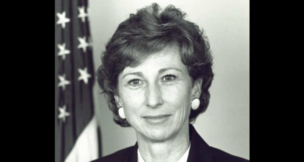Student lawmaker’s bill on tuitions to be introduced
Arizona Capitol Reports Staff//December 7, 2007//[read_meter]
Student lawmaker’s bill on tuitions to be introduced
Arizona Capitol Reports Staff//December 7, 2007//[read_meter]
Rep. David Schapira thought it would be a good way to motivate his students in the Arizona Legislature class he taught this semester at Arizona State University: promise them one of their ideas for mock legislation would be turned into an actual bill in the upcoming legislative session.
“The best part was seeing the students fight for something they created,” he said.
Rather than learn about the Legislature and the legislative process from an academic, the students were taught by a sitting lawmaker. And the District 17 Democrat’s status carried with it not just an insider’s perspective of how things work at the Capitol, but also access to the House floor, where the students got a chance to debate bills in a mock session.
However, prior to the class’ field trip to the Capitol, each of the three-dozen or so students came up with an idea for legislation. Schapira guided them through the process of turning the proposal into legislation. Then the class split into committees — Government, Judiciary, Transportation and so on, just like the real-life House — and voted on the bills.
When the class met Nov. 30 at the House of Representatives, it debated the 32 bills that received a committee’s approval, gaining firsthand experience in Committee of the Whole and Third Reading at the same time.
When the dust settled, 13 of the bills received the necessary 31 votes to pass. During the proceedings, one student objected to the high number of votes needed, given there were only slightly more than that many people in the class. But Schapira said the goal was to parallel the way the House actually works.
“Sometimes we don’t have many more people than this on the floor at one time,” he told the students. “That’s why it’s so hard to get 31 votes.”
Schapira told Arizona Capitol Times he discussed each of the bills that passed with House Speaker Jim Weiers before deciding to select the proposal submitted by Chris Gustafson, a political science junior.
Gustafson’s bill, which Schapira says he will file in the coming weeks, would require tuition increases greater than 5 percent be approved by two-thirds of the Arizona Board of Regents instead of the simple majority required now. A two-thirds threshold would also be required for student-fee increases greater than $200.
It would also confer voting rights on both student representatives to the Board of Regents; currently, only one of the student members is allowed to vote.
Gustafson, who serves as vice president of Undergraduate Student Government at ASU and hopes one day to work as a policy adviser at the Legislature, says he is surprised his measure was chosen and now will work to get it heard when the Legislature convenes in January.
“My end goal for this would be everybody to come together and, instead of having two tuition proposals [from the university presidents and the students], having one proposal everyone can agree with,” he said.
House Higher Education Committee Chairman Jennifer Burns, R-23, says she will be willing to meet with Schapira and Gustafson, but expressed concerns over the notion of requiring the Board of Regents to meet a supermajority to pass some tuition increases.
“I think we need to look at the Constitution to determine if we have the ability to require a two-thirds vote,” she said.
But the Constitution does not govern the actions of the Board of Regents; it merely creates the body to govern the universities and requires the governor to appoint its members. Title 15 of Arizona Revised Statutes dictates the board’s policy and procedures, including its ability to change tuition and fees.
Burns also expressed reluctance to allow the second student to vote. Each year, one student is appointed to a two-year term; for the first year, the student is prohibited from voting. Burns said the law was written that way because there is such a steep learning curve for board members.
Despite her concerns, though, Burns says she will keep an open mind in any meetings with Schapira and Gustafson.
“I’m willing to entertain the idea and look at the pros and cons,” she said.
















